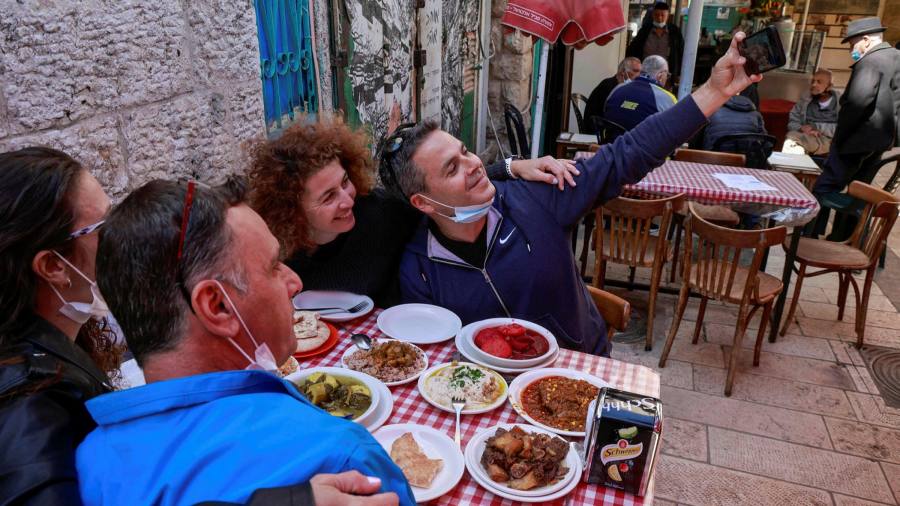[ad_1]
First, Americans had Dolly Parton singing of vaccines to the tune of “Jolene†to encourage them to get the jab (“I’m begging of you, please don’t hesitate/ ’cause once you’re dead then that’s a bit too lateâ€). Now they have a further incentive. The Centers for Disease Control and Prevention this week said fully vaccinated adults could meet each other or people at low risk of contracting Covid-19 indoors, without social distancing or masks. If Americans needed any more impetus, they could look across to Israel, whose population is celebrating after its superfast vaccine rollout led to most restrictions being lifted, or disregarded.
For locked-down citizens elsewhere, the US and Israeli moves offer enticing glimpses of a post-vaccination world. Yet the US guidelines, in particular, prompted surprise elsewhere. In the UK, which has vaccinated a bigger proportion of its adults than the US, distancing rules remain in place for all. England’s chief medical officer warned this week the virus could surge again in autumn, long after inoculations are supposed to be completed.
The CDC argued it was important to spell out how life could begin to return to normal. The benefits of reducing social isolation for the vaccinated outweighed the risks, it said, and might “help improve . . . vaccine acceptance and uptake†among the hesitant. Social distancing and mask-wearing have also met more resistance in the US than anywhere; with infections still raging, governors in Texas and Mississippi have lifted statewide mask requirements for all — which President Joe Biden called “Neanderthal thinkingâ€.
In Israel, 4m of its nearly 7m adults are fully vaccinated, with a further 1m awaiting their second shot. The rest are deemed unlikely to get the jab, through scepticism or perceived lack of need. The government’s laissez-faire approach to enforcing remaining restrictions may partly reflect the fact that it is facing another election on March 23, the fourth in two years. But, while it is pondering how to persuade sceptics to get jabs, the government appears to be following a tacit policy of monitoring hospital admissions while being ready to let the virus circulate among the young unvaccinated.
Other governments may in time opt for a similar approach. One reason for maintaining measures such as mask-wearing even with vaccinations well under way has been uncertainty over whether jabs prevent transmission as well as infection. Evidence is slowly mounting that they do. Israel’s health ministry found shots were 94 per cent effective at preventing symptomatic infections, and 89 per cent against infections of any kind, including those without symptoms. If little or no virus can be detected, many scientists assume it cannot be passed on.
The big threat to the “dream†scenario of governments being able to ease restrictions almost entirely as inoculation programmes end is the emergence of new variants that resist existing vaccines or cause worse symptoms and higher hospitalisations even among the young and healthy. Later rounds of jabs — booster shots against mutated strains — seem inevitable. Testing programmes may be needed for some time to hunt down new variants, and as an alternative to “vaccine passports†for those who cannot or choose not to be jabbed.
Little by little, however, outlines of the post-pandemic normal are becoming discernible. Rich-world governments that are making good progress with vaccinations now need to prepare to donate their surplus doses to the developing world — to ensure they are not the only ones that can enjoy that brighter future.
[ad_2]
Source link






